Traduction médicale chinois-anglais
Jinyu Translation est fière de proposer des services de traduction médicale chinois-anglais spécialisés, répondant aux besoins spécifiques des secteurs de la santé et de la médecine. Notre équipe est composée de traducteurs hautement qualifiés et expérimentés, dotés d'une connaissance approfondie de la terminologie médicale, garantissant une traduction précise et culturellement adaptée de divers documents médicaux. Qu'il s'agisse de documents d'essais cliniques, de dossiers médicaux, de rapports médicaux, de documents réglementaires ou de contenu pharmaceutique, nous maintenons les normes de précision et de confidentialité les plus élevées. L'engagement de Jinyu envers la qualité s'étend au respect des exigences réglementaires, garantissant à nos clients des traductions conformes aux normes du secteur et facilitant une communication fluide dans le paysage médical mondial. En mettant l'accent sur la clarté, la précision et les nuances culturelles, Jinyu Translation est votre partenaire de confiance pour fournir des services de traduction médicale chinois-anglais de premier ordre.
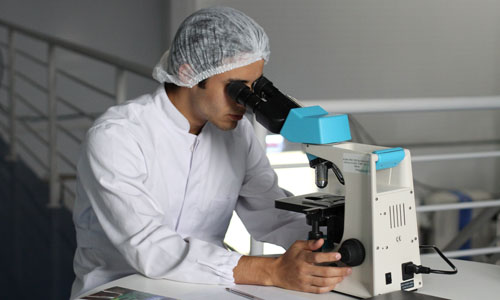
Pourquoi nous choisir
Plus
Nos linguistes médicaux sont des locuteurs natifs de plus de 60 langues, chacun formé en médecine, biochimie, chimie, pharmacologie, toxicologie et études cliniques.
C'est pourquoi nos traducteurs médicaux connaissent non seulement les expressions linguistiques et les conversions de phrases, mais aussi les termes médicaux, les meilleures pratiques, les normes du secteur, l'éthique et les réglementations en matière de santé. Nous faisons la meilleure adéquation entre votre tâche spécifiée et nos compétences linguistiques lors du traitement de textes médicaux.
Nous allons chaque année dans les universités de médecine pour trouver des projets de valeur partagée. Les étudiants peuvent suivre nos cours individuels pour parler, écrire et traduire. Nous apprenons leurs connaissances spécialisées : microbiologie, biologie moléculaire, physiologie humaine, kinésiologie, écologie, immunologie, pathologie et neurologie. Ces documents ou cours universitaires nous apprennent à créer notre base de données de connaissances, à nous concentrer sur les points clés du contenu et à trouver les meilleures explications de matières premières.
Plus
La difficulté de la traduction des documents médicaux réside essentiellement dans les termes et expressions de nature particulière. Les traducteurs sans formation médicale peuvent difficilement comprendre des paragraphes contenant une multitude de normes et de jargon.
Les noms des maladies, les méthodes de diagnostic, les techniques d'opération et les dispositifs médicaux ont généralement une signification exacte. Une mauvaise traduction de ces contenus peut conduire à des diagnostics erronés, voire à des catastrophes sanitaires. Notre service de traduction vous communiquera les termes grâce à notre base de données linguistiques, ce qui garantit de manière significative la qualité et la clarté des documents finaux.
Vous trouverez ci-dessous quelques exemples tirés de notre base de données de vocabulaire médical chinois-anglais : « Test sanguin de créatinine (肌酐血检) », « Cholestérol LDL (低密度脂蛋白胆固醇) », « Test de la fonction thyroïdienne (甲状腺功能检查) », « Hépatite B ». Vaccin (乙肝疫苗) », « Vaccin contre le virus Rota (轮状病毒疫苗) », « ALT/SGPT (丙氨酸氨基转移酶) », « Analyseur de composition corporelle (人体成分分析仪) », « Carcinome épidermoïde (鳞状细胞癌)», « neurodégénérescence (神经退行性变) », « 5-fluorouracile (5-氟尿嘧啶) », « Remplacement chirurgical de la valve aortique (外科主动脉瓣置换术) ».
Plus
Nos équipes de traducteurs sont disponibles 24 heures sur 24, 7 jours sur 7, pour vous aider en cas de besoins immédiats ou urgents en matière de traduction médicale.
Nous savons que vos projets peuvent parfois démarrer rapidement et être livrés dans les plus brefs délais. Cette tâche est facile pour nos linguistes spécialisés en langues médicales qui travaillent dans le monde entier. Vos courriels ou vos appels téléphoniques seront toujours répondus en quelques heures. En raison de notre quart de travail à temps plein, la relecture des documents médicaux se poursuit.
Une capacité supplémentaire d'au moins 35 % peut être fournie si votre dossier médical nécessite un retour accéléré. Il est courant que notre système de transition ait plus de personnel, car quels que soient les documents pharmaceutiques ou les transcriptions médicales, une grande attention de coordination et de relecture est requise. Nous prenons des mesures immédiates lorsque la date limite est imminente, et le calendrier ne sera de toute façon pas perturbé.
Services connexes
Traducteurs médicaux chinois professionnels
1. Types de nos traductions médicales
Jinyu Translation est spécialisée dans la fourniture de services de traduction médicale précis et culturellement adaptés de l'anglais vers le chinois dans divers domaines du secteur médical et de la santé. Voici une liste des projets courants de traduction médicale de l'anglais vers le chinois que nous gérons :
- Documents d'essais cliniques:Formulaires de consentement éclairé, protocoles, matériel de recrutement de patients et rapports d’études cliniques.
- Rapports médicaux:Dossiers médicaux des patients, rapports de diagnostic, résultats de tests de laboratoire.
- Documentation pharmaceutique:Étiquettes de médicaments, emballages, modes d'emploi, soumissions réglementaires.
- Documents réglementaires:Documentation de conformité, soumissions aux autorités sanitaires, directives réglementaires.
- Documents de recherche médicale:Articles scientifiques, manuscrits de recherche, actes de conférence.
- Politiques et procédures en matière de soins de santé:Politiques hospitalières, manuels de procédures, lignes directrices en matière de soins de santé.
- Matériel d'éducation des patients:Brochures, dépliants, contenus pédagogiques pour les patients.
- Documentation des dispositifs médicaux:Manuels pour équipements médicaux, modes d'emploi, spécifications techniques.
plus
- Documents de pharmacovigilance:Rapports d'événements indésirables, documents de surveillance de la sécurité.
- Traductions en télémédecine:Traduction pour plateformes de télésanté, systèmes de surveillance à distance des patients.
- Contenu sur la santé et le bien-être:Programmes de bien-être, matériel de promotion de la santé.
- Matériel de formation médicale:Manuels de formation, matériels pédagogiques pour les professionnels de la santé.
- Documents d'assurance maladie:Documents de politique, réclamations d’assurance, informations sur la couverture.
- Documents de santé publique:Campagnes de santé publique, matériel de prévention des maladies.
- Traductions de la recherche biomédicale:Propositions de recherche, rapports de laboratoire, contenu de recherche biomédicale.
- Présentations médicales:Traductions pour conférences, séminaires et présentations médicales.
- Supports de marketing pharmaceutique:Traduction de supports marketing et promotionnels.
- Enquêtes et questionnaires médicaux:Traductions pour enquêtes auprès des patients, questionnaires de recherche clinique.
- Applications mobiles pour la santé: Localisation d'applications mobiles médicales et liées à la santé.
- Matériel de conseil génétique:Traduction de documents et de matériels de conseil génétique.


2. Exemples de terminologie médicale chinois-anglais
Voici quelques exemples de terminologie médicale professionnelle et spécifique chinois-anglais dans laquelle Jinyu Translation est spécialisé :
Réaction en chaîne par polymérase (聚合酶链反应)
Immunoglobuline intraveineuse (静脉免疫球蛋白)
Unité de soins intensifs néonatals (新生儿重症监护室)
Tomodensitométrie (计算机断层扫描)
Pontage coronarien (冠状动脉搭桥手术)
Cardiomyopathie hypertrophique (肥厚性心肌病)
Cholangiopancréatographie rétrograde endoscopique (内窥镜逆行胰胆管造影术)
Analyse du liquide céphalorachidien (脑脊液分析)
Thérapie par électrochocs (电休克疗法)
Hémopathies malignes (血液肿瘤)
Oto-rhino-laryngologie (耳鼻喉科学)
Chirurgie mini-invasive (微创手术)
Apnée obstructive du sommeil (阻塞性睡眠呼吸暂停)
plus
细胞遗传学 (Xìbāo Yíchuán Xué) – Cytogénétique
免疫病学 (Miǎnyì Bìngxué) – Immunologie
骨科学 (Gǔkē Xué) – Orthopédie
危重症监护 (Wēizhòngzhèng Jiānhù) – Soins intensifs
心血管病学 (Xīnxuèguǎn Bìngxué) – Cardiologie
生物医学工程 (Shēngwù Yīxué Gōngchéng) – Génie biomédical
泌尿外科学 (Mìniào Wàikē Xué) – Urologie
风湿免疫学 (Fēngshī Miǎnyì Xué) – Rhumatologie et immunologie
癌症遗传学 (Áizhèng Yíchuán Xué) – Génétique du cancer
心理学评估 (Xīnlǐ Xué Pínggū) – Évaluation psychologique
妇科学 (Fùkē Xué) – Gynécologie
消化内科学 (Xiāohuà Nèikē Xué) – Gastroentérologie
药理学研究 (Yàolǐ Xué Yánjiū) – Recherche pharmacologique
Ces exemples représentent la terminologie spécialisée utilisée dans diverses disciplines médicales. Jinyu Translation garantit la précision et l'exactitude de la traduction de ce contenu médical professionnel, permettant ainsi une communication efficace au sein des secteurs médical et de la santé.
3. Pourquoi la traduction médicale est-elle spéciale ?
La traduction médicale est un domaine hautement spécialisé en raison des caractéristiques et des défis uniques associés à la traduction de contenu médical. Plusieurs facteurs contribuent à la spécificité de la traduction médicale :
- Terminologie complexe : Les textes médicaux sont chargés d'une terminologie complexe et spécialisée qui nécessite une connaissance approfondie des sciences médicales. Les traducteurs doivent maîtriser parfaitement l'anatomie, la physiologie, la pharmacologie et d'autres disciplines médicales pour transmettre avec précision des significations précises dans la langue source et la langue cible.
- Conformité réglementaire : Les traductions médicales concernent souvent des documents soumis à des exigences réglementaires strictes. Les traducteurs doivent connaître et respecter les directives réglementaires afin de garantir que les documents traduits sont conformes aux normes des autorités sanitaires de la région linguistique cible.
- Sécurité des patients : La précision est primordiale dans la traduction médicale, car les erreurs peuvent avoir de graves conséquences sur la sécurité des patients. Les interprétations ou traductions erronées des instructions, des dosages ou des procédures médicales peuvent entraîner des malentendus et potentiellement nuire aux patients.
- Sensibilité culturelle : Les nuances culturelles jouent un rôle crucial dans la communication médicale. Les traducteurs doivent être sensibles aux différences culturelles dans la manière dont les informations médicales sont transmises et reçues. Cela est particulièrement important lors de la traduction de contenu lié aux soins aux patients, à l'éthique ou aux décisions de fin de vie.
plus
- Publics cibles divers : Les traductions médicales s'adressent souvent à des publics variés, notamment des professionnels de la santé, des patients, des chercheurs et des autorités réglementaires. Chaque public requiert une approche sur mesure et les traducteurs doivent adapter leur langage aux besoins spécifiques et aux niveaux de compréhension du public cible.
- Connaissances multidisciplinaires : Une traduction médicale réussie exige une approche multidisciplinaire. Les traducteurs doivent avoir une compréhension approfondie non seulement de la terminologie médicale, mais aussi de domaines connexes tels que la pharmacologie, la biotechnologie et la gestion des soins de santé.
- Confidentialité et confidentialité : Les documents médicaux contiennent souvent des informations sensibles et confidentielles. Les traducteurs doivent respecter des normes strictes de confidentialité et de respect de la vie privée, ce qui nécessite un traitement sécurisé des documents et le respect des réglementations en matière de protection des données.
- Apprentissage continu : Le domaine médical est dynamique et connaît des avancées et des mises à jour constantes. Les traducteurs médicaux doivent se former en permanence pour rester au courant des dernières terminologies, procédures et technologies médicales.
Compte tenu de ces défis et de la nature critique des informations médicales, la traduction médicale exige non seulement une expertise linguistique, mais aussi une compréhension approfondie du sujet, des cadres réglementaires et des sensibilités culturelles. Les traducteurs dans ce domaine jouent un rôle crucial pour faciliter une communication précise et assurer la diffusion efficace des connaissances médicales au-delà des frontières linguistiques et culturelles.
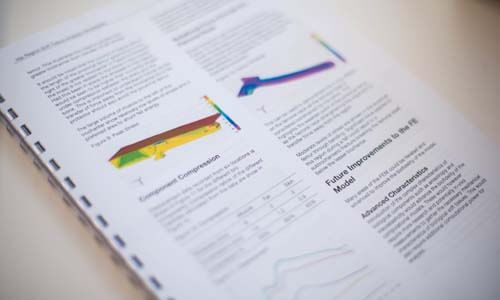

4. Techniques de traduction
La traduction médicale fait appel à des techniques spécialisées pour garantir l'exactitude, la clarté et la pertinence culturelle de la transmission d'informations médicales complexes. Voici quelques techniques courantes de traduction médicale :
- Gestion de la terminologie:Établir et tenir à jour un glossaire médical complet pour assurer une traduction cohérente et précise des termes spécialisés. Ce glossaire peut inclure la terminologie de diverses disciplines médicales.
- Recherche et référence:Effectuez des recherches approfondies et utilisez des références médicales fiables pour rester au courant de la terminologie, des procédures et des avancées médicales les plus récentes, garantissant ainsi une traduction précise.
- Expertise en la matière:Engagez des traducteurs ayant une formation ou une expérience dans le domaine médical pour garantir une compréhension approfondie des concepts et de la terminologie médicaux complexes.
- Compréhension contextuelle: Tenez compte du contexte dans lequel les textes médicaux sont utilisés. Comprendre l'objectif, le public et l'utilisation prévue de la traduction permet de fournir des traductions précises et contextuellement adaptées.
- Conformité réglementaire:Respecter les exigences réglementaires dans les langues source et cible, en veillant à ce que les documents traduits soient conformes aux normes et réglementations des autorités sanitaires compétentes.
plus
- Sensibilité culturelle: Tenez compte des nuances culturelles lors de la traduction du contenu médical pour garantir que les informations sont transmises de manière appropriée et respectueuse dans la culture cible, en particulier lorsqu’il s’agit de sujets tels que les soins aux patients, l’éthique ou les questions médicales sensibles.
- Textes parallèles:Utilisez des textes parallèles ou des documents précédemment traduits comme références pour maintenir la cohérence de la terminologie et du style entre les différentes traductions médicales.
- Collaboration:Favoriser la collaboration entre les traducteurs et les professionnels de la santé pour clarifier les ambiguïtés, discuter des nuances médicales et garantir une traduction précise des documents médicaux.
- Assurance qualité:Mettre en œuvre des processus d’assurance qualité, notamment la relecture et l’édition par des professionnels possédant une expertise médicale, pour détecter toute erreur ou inexactitude dans la traduction.
- Adaptation au public cible:Adaptez la traduction aux besoins spécifiques et aux niveaux de compréhension du public cible, qu’il s’agisse de professionnels de la santé, de patients ou d’organismes de réglementation.
- Utilisation de la technologie:Exploitez les outils de mémoire de traduction et d’autres technologies linguistiques pour maintenir la cohérence et l’efficacité, en particulier lorsque vous avez affaire à des termes ou expressions médicales récurrents.
- Mesures de confidentialité et de protection de la vie privée:Mettre en œuvre des mesures strictes de confidentialité et de confidentialité pour protéger les informations médicales sensibles pendant le processus de traduction.
En utilisant ces techniques, les traducteurs médicaux peuvent garantir que le contenu traduit répond aux normes les plus élevées d’exactitude, de clarté et de pertinence culturelle, facilitant ainsi une communication efficace au sein du secteur de la santé.
5. Traduction de protocoles d'essais cliniques
Jinyu Translation propose un service de traduction de protocoles d'essais cliniques complet et spécialisé, garantissant une traduction précise et exacte de documents cruciaux dans le domaine hautement réglementé de la recherche clinique. Notre équipe de traducteurs expérimentés, maîtrisant parfaitement les langues source et cible, possède une compréhension approfondie de la terminologie complexe et des exigences spécifiques associées aux protocoles d'essais cliniques. Nous reconnaissons l'importance primordiale de maintenir l'intégrité et la cohérence de ces documents dans toutes les langues, et nos traducteurs s'engagent à respecter les normes de précision les plus élevées pour répondre aux exigences strictes des industries pharmaceutiques et de la santé.
plus
Notre service de traduction de protocoles d'essais cliniques va au-delà de la maîtrise linguistique. Nous accordons la priorité à la conformité réglementaire, reconnaissant le rôle essentiel que joue le respect des normes internationales dans la réussite des essais cliniques. Jinyu Translation collabore étroitement avec ses clients pour garantir que les protocoles traduits transmettent non seulement le sens voulu avec précision, mais s'alignent également parfaitement sur les cadres réglementaires des régions ciblées. Avec un engagement envers la confidentialité, la précision et une compréhension approfondie du paysage des essais cliniques, Jinyu Translation est un partenaire de confiance pour les organisations à la recherche de solutions de traduction fiables et efficaces pour leurs protocoles d'essais cliniques.
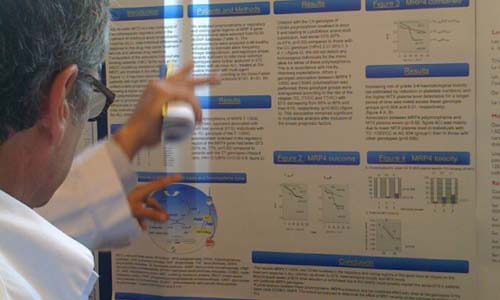
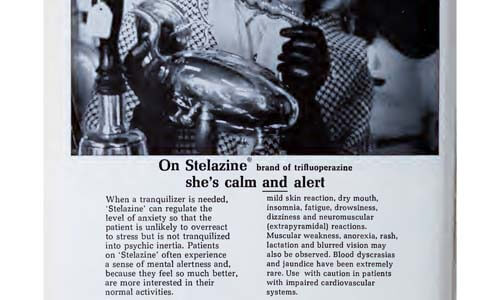
6. Traduction d'articles de revues médicales
Jinyu Translation est spécialisé dans la traduction d'articles de revues médicales méticuleux et spécialisés, répondant aux normes rigoureuses et aux exigences nuancées du domaine de l'édition scientifique et médicale. Notre équipe de traducteurs hautement qualifiés comprend des personnes possédant à la fois une expertise linguistique et une vaste expérience dans diverses disciplines médicales, garantissant une compréhension nuancée de concepts médicaux complexes. Avec un engagement envers l'exactitude et la clarté, nous traduisons méticuleusement des articles de revues médicales tout en préservant le sens voulu et l'intégrité scientifique, les rendant accessibles à un public mondial.
plus
Jinyu Translation, consciente de la nature dynamique de la recherche médicale, est parfaitement équipée pour gérer diverses spécialités médicales, en veillant à ce que les articles de revues traduits reflètent les dernières avancées et adhèrent aux conventions de la communauté scientifique de la langue cible. Nous accordons la priorité au maintien de la voix de l'auteur et au respect du style distinctif de chaque publication, reconnaissant l'importance d'une intégration transparente dans le discours scientifique mondial. Jinyu Translation est un partenaire fiable pour les chercheurs, les universitaires et les professionnels de la santé à la recherche de services de traduction de premier ordre pour leurs articles de revues médicales, favorisant une communication efficace et la diffusion des connaissances au-delà des frontières linguistiques.
7. Traduction de brochures sur les soins de santé Traduction de protocoles d'essais cliniques
Jinyu Translation est fière de fournir des services de traduction de brochures médicales précis et culturellement adaptés, répondant aux besoins de communication uniques du secteur de la santé. Notre équipe de traducteurs qualifiés allie compétence linguistique et compréhension approfondie des concepts de la santé, garantissant que les brochures traduites transmettent non seulement des informations médicales précises, mais trouvent également un écho auprès du public cible. Nous reconnaissons l'importance d'une communication claire et accessible dans le domaine de la santé, et nos services de traduction s'efforcent de combler les lacunes linguistiques tout en préservant l'intégrité du contenu.
plus
Dans le domaine des brochures de santé, où les informations sont souvent destinées aux patients, aux familles ou au grand public, Jinyu Translation s'efforce de fournir des traductions non seulement exactes mais également pertinentes sur le plan culturel. Que le contenu concerne les services médicaux, la promotion de la santé ou l'éducation des patients, nos traducteurs travaillent avec diligence pour adapter la langue, le ton et les nuances au contexte culturel du public cible. Avec un engagement envers la qualité, Jinyu Translation est un partenaire de confiance pour les organisations de santé qui recherchent des traductions efficaces et percutantes de leurs brochures, favorisant une communication claire et promouvant la sensibilisation aux soins de santé à l'échelle mondiale.
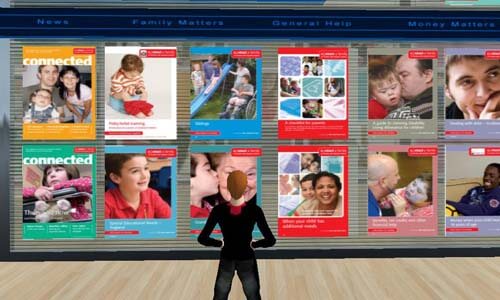
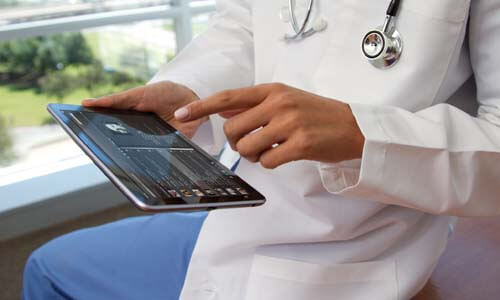
8. Localisation de logiciels médicaux chinois
Jinyu Translation est à l'avant-garde de la localisation de logiciels médicaux chinois, fournissant un service spécialisé qui va au-delà de la simple traduction pour assurer une intégration transparente dans le paysage médical chinois. Notre équipe d'experts, composée de linguistes ayant une connaissance approfondie de la terminologie médicale et de spécialistes de la localisation de logiciels, collabore pour offrir une expérience utilisateur entièrement adaptée et culturellement pertinente. Reconnaissant l'importance cruciale de la précision dans les logiciels de santé, nous traduisons et localisons méticuleusement les interfaces utilisateur, la documentation d'aide et d'autres composants logiciels, en adhérant aux normes du secteur et aux exigences réglementaires.
plus
Dans le domaine de la localisation de logiciels médicaux chinois, Jinyu Translation adopte une approche holistique qui va au-delà de l'adaptation linguistique. Nous prenons en compte les nuances culturelles du public sinophone et adaptons l'interface du logiciel aux préférences et aux attentes locales. Cette attention méticuleuse aux détails garantit que les utilisateurs finaux de l'environnement médical chinois peuvent naviguer dans le logiciel de manière fluide et en toute confiance. En choisissant Jinyu Translation pour la localisation de logiciels médicaux, les clients bénéficient d'un partenaire fiable qui s'engage à fournir non seulement du contenu traduit, mais également une solution entièrement intégrée et culturellement adaptée dans le domaine dynamique et en constante évolution des technologies de la santé.
Témoignages
FAQ
Q : Quels types de documents médicaux traduisez-vous dans votre service de traduction médicale anglais-chinois/chinois-anglais ?
R : Nous sommes spécialisés dans la traduction d’une large gamme de documents médicaux, notamment des protocoles d’essais cliniques, des articles de revues médicales, des brochures de soins de santé, du matériel pédagogique destiné aux patients, des interfaces de logiciels médicaux et divers documents réglementaires.
Q : Comment garantissez-vous l’exactitude des traductions médicales ?
R : Nos traducteurs médicaux sont non seulement compétents sur le plan linguistique, mais possèdent également une expérience dans le domaine médical. Nous mettons en œuvre des processus d'assurance qualité rigoureux, notamment la relecture par des professionnels de la santé, pour garantir le plus haut niveau de précision dans nos traductions.
Q : Vos traductions médicales sont-elles conformes aux normes réglementaires ?
R : Oui, nous accordons la priorité à la conformité réglementaire dans nos traductions médicales. Notre équipe connaît parfaitement les exigences réglementaires internationales et nous travaillons en étroite collaboration avec nos clients pour garantir que les documents traduits sont conformes aux normes des autorités sanitaires compétentes.
Q : Pouvez-vous gérer des projets de traduction médicale urgents ?
R : Absolument. Nous comprenons que les projets médicaux sont soumis à des contraintes de temps. En fonction de la complexité et du volume, nous pouvons fournir des services accélérés pour respecter des délais serrés sans compromettre la qualité de la traduction.
Q : Comment gérez-vous la confidentialité et la vie privée dans les traductions médicales ?
R : Nous prenons la confidentialité au sérieux. Notre équipe adhère à des mesures de confidentialité strictes et nous sommes disposés à signer des accords de non-divulgation (NDA) pour garantir le traitement sécurisé des informations médicales sensibles.
Q : Fournissez-vous des services de localisation pour les interfaces de logiciels médicaux ?
R : Oui, nous proposons des services complets de localisation de logiciels médicaux, en adaptant les interfaces utilisateur, la documentation d’aide et d’autres composants pour répondre aux attentes culturelles et linguistiques du public sinophone.
Q : Pouvez-vous adapter des traductions médicales à des publics cibles spécifiques, tels que les patients ou les professionnels de la santé ?
R : Absolument. Nous comprenons que les différents publics ont des niveaux de compréhension différents. Nos traductions sont adaptées aux besoins spécifiques et aux niveaux de compréhension du public cible, qu'il s'agisse de professionnels de la santé, de patients ou d'organismes de réglementation.
Q : Quel est votre processus pour garantir la sensibilité culturelle dans les traductions médicales ?
R : Nos traducteurs tiennent compte des nuances culturelles lors de la traduction de contenu médical afin de garantir que les informations sont transmises de manière appropriée et respectueuse dans la culture cible. Nous accordons la priorité au maintien de la sensibilité culturelle, en particulier dans les domaines liés aux soins aux patients, à l'éthique et aux questions médicales sensibles.
Q : Pouvez-vous gérer des projets de traduction médicale à grande échelle ?
R : Oui, nous disposons de la capacité et de l’expertise nécessaires pour gérer des projets de traduction médicale à grande échelle. Notre équipe est équipée pour gérer efficacement des projets de différentes tailles tout en maintenant la qualité et la précision des traductions.
Q : Comment vous tenez-vous au courant des dernières terminologies et avancées médicales ?
R : Nos traducteurs s’engagent dans un apprentissage continu et se tiennent au courant des dernières terminologies, procédures et avancées médicales grâce à la recherche, au développement professionnel et à la collaboration avec des professionnels de la santé.



